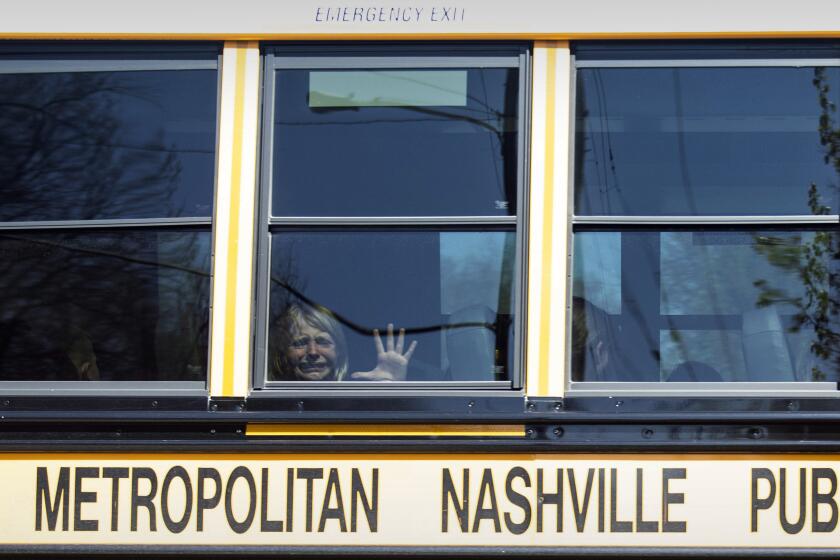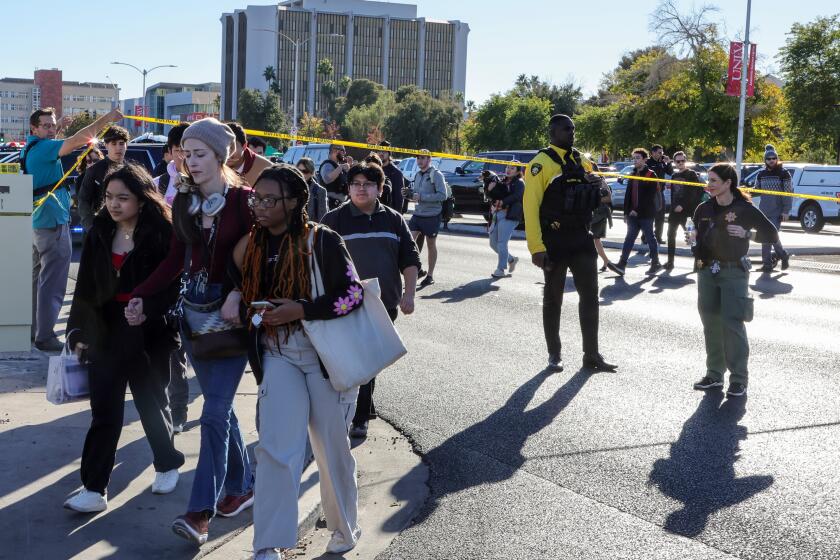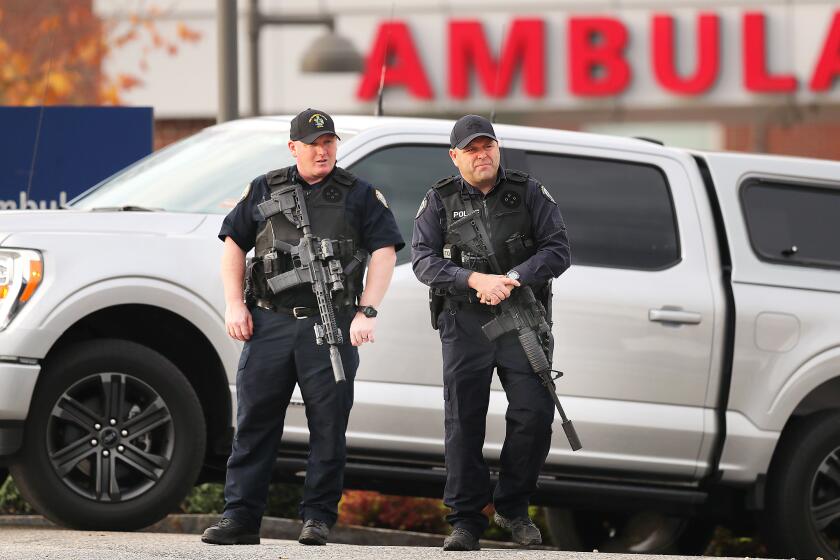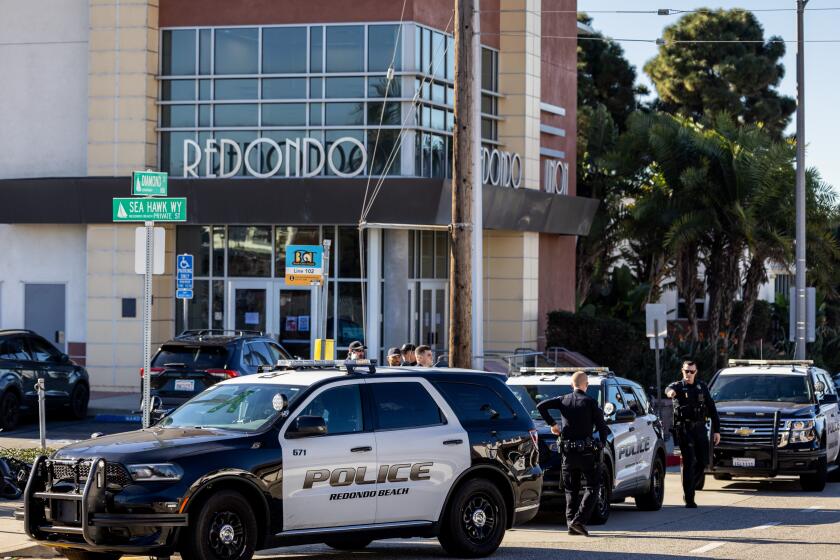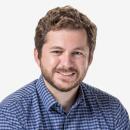3 killed, 1 injured in UNLV mass shooting; shooter was an academic in his 60s, sources say
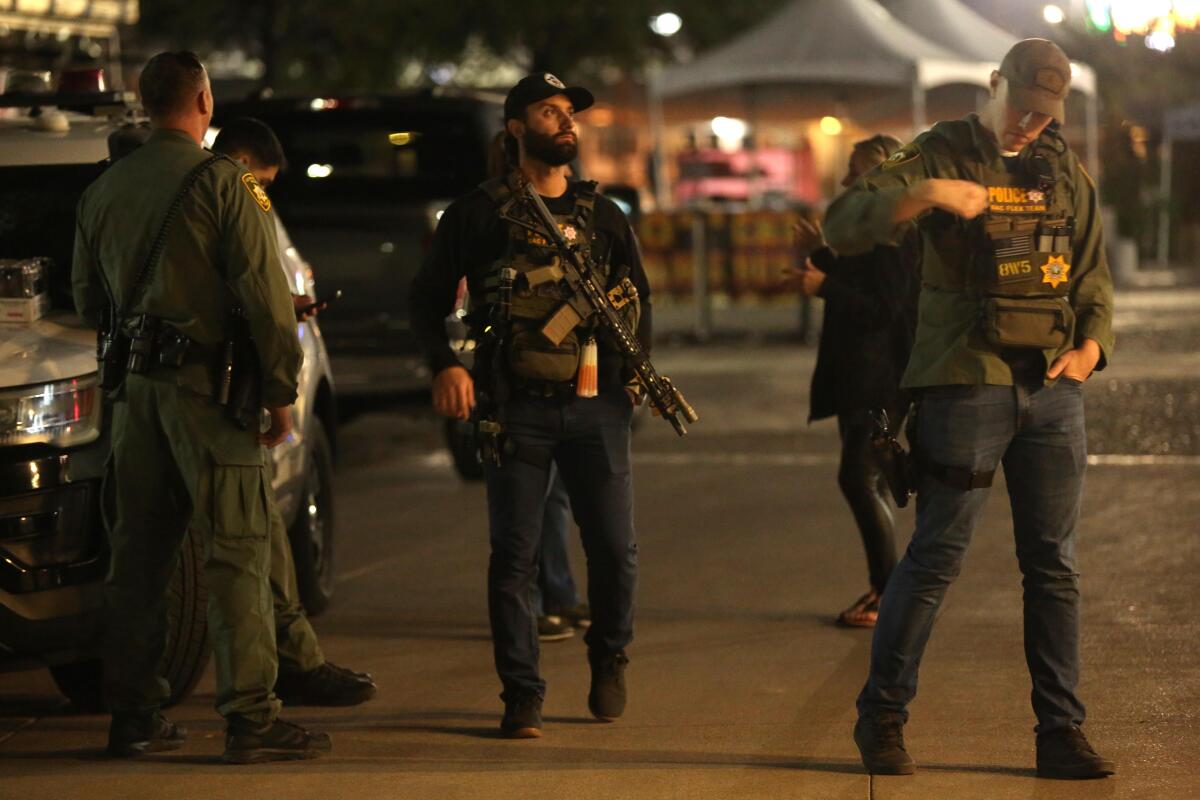
A gunman opened fire Wednesday on the campus of the University of Nevada, Las Vegas, killing three people and unsettling a city that six years ago endured one of the worst mass shootings in U.S. history.
The shooting, which also left the assailant dead and at least one other person injured, was reported around noon at the Frank and Estella Beam Hall, home to the Lee Business School, police said.
The gunman was an academic in his 60s, according to sources familiar with the investigation, who declined to provide further details.
The assailant died around 12:30 p.m. after a massive tactical response by Las Vegas Metro police and its SWAT vehicles along with federal law enforcement, sources told The Times. Within a few minutes of the first shot being fired, Las Vegas Metro police officers fired on the shooter, sources said.
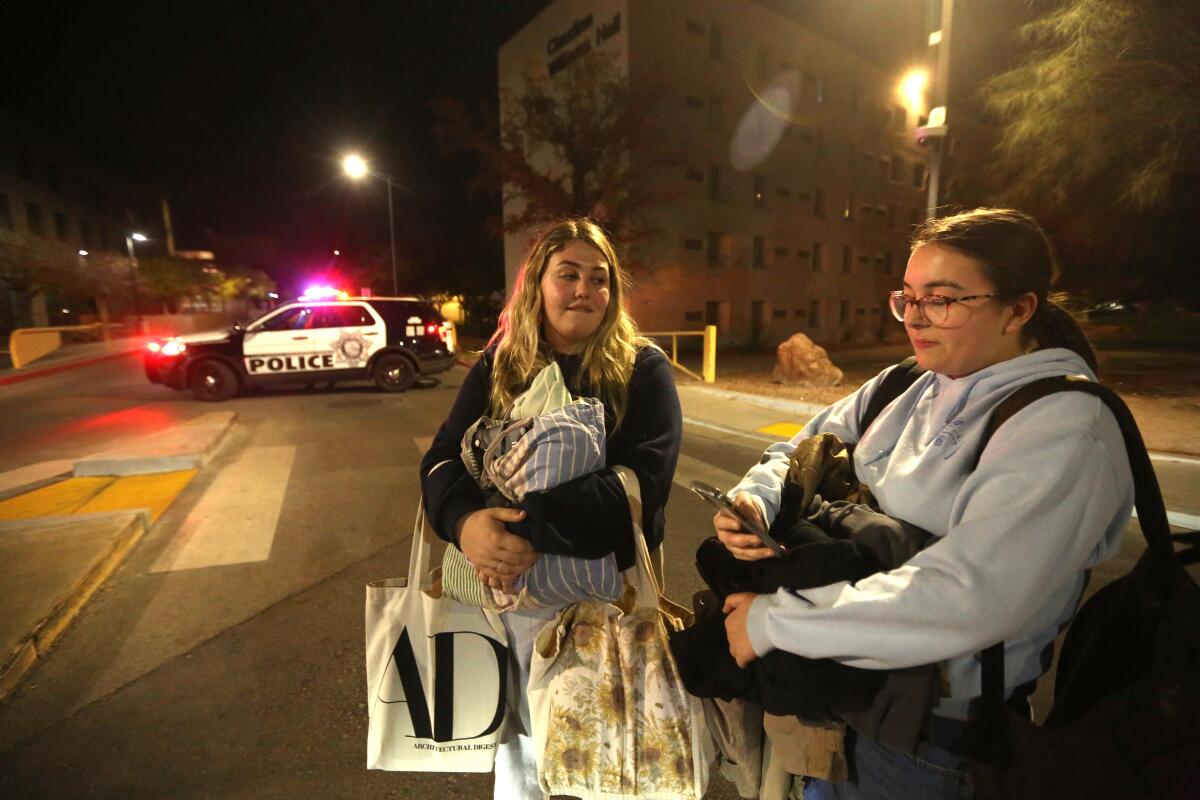
At a news conference Wednesday evening, Las Vegas Metropolitan Police Chief Kevin McMahill said investigators knew the shooter’s identity but wouldn’t release it until next of kin were notified.
“What happened today was a heinous, unforgivable crime,” he said. “But I want you to know something. It’s crime that we trained for each and every day.”
The identities of the three victims also were withheld Wednesday. The condition of the fourth victim, who was critically injured with a gunshot wound, had stabilized as of Wednesday night, according to authorities.
The violence upended life in Las Vegas, causing lockdowns on campus, road closures and a temporary ground stop at the airport.
The shooting left people on campus hiding and fearful for classmates and others.
“We heard somebody trying to open the door”: Students tell of building barricades and hiding, or running, and texting loved ones as an active shooter was on the UNLV campus.
Cesar Marquez, 33, was helping train student political organizers when he got the warning of an active shooter.
“We locked the front doors, turned off the lights,” he said, “and then everybody just kinda barricaded behind some tables.
Half an hour in came “the update that the shooter was in the Student Union.”
“At some point after that, we heard somebody trying to open the door,” he said, and those in the room were not sure whether it was police or the shooter.
They heard an officer screaming instructions, then a SWAT team “came in and asked us to raise our hands.”
During the chaos of the evacuation, some students told Marquez they saw a body that “appeared to have been shot in the head.” It was a bigger, older man surrounded by blood, they said.
The first half of 2023 saw the deadliest six months of mass killings — all but one of them shootings — recorded in the U.S. since at least 2006.
Brandon Sanchez, 20, was sitting in front of Beam Hall, where a free food event for “study week” was happening. About 200 people were in the plaza, he said, when he heard about six loud bangs directly behind him.
“We started walking slowly away, and then when we saw a police car pull up, then we started running,” he said.
Sanchez raced across the street to a store where students began gathering inside, calling friends and family. Police flooded onto the campus, and Sanchez said at least four cruisers were on the scene within seconds of the last gunshot.
Classes were canceled for the rest of Wednesday, the college said on social media. It was not immediately clear whether the campus would reopen Thursday.
“I’m not going back at least until more security measures are being taken,” Sanchez said.
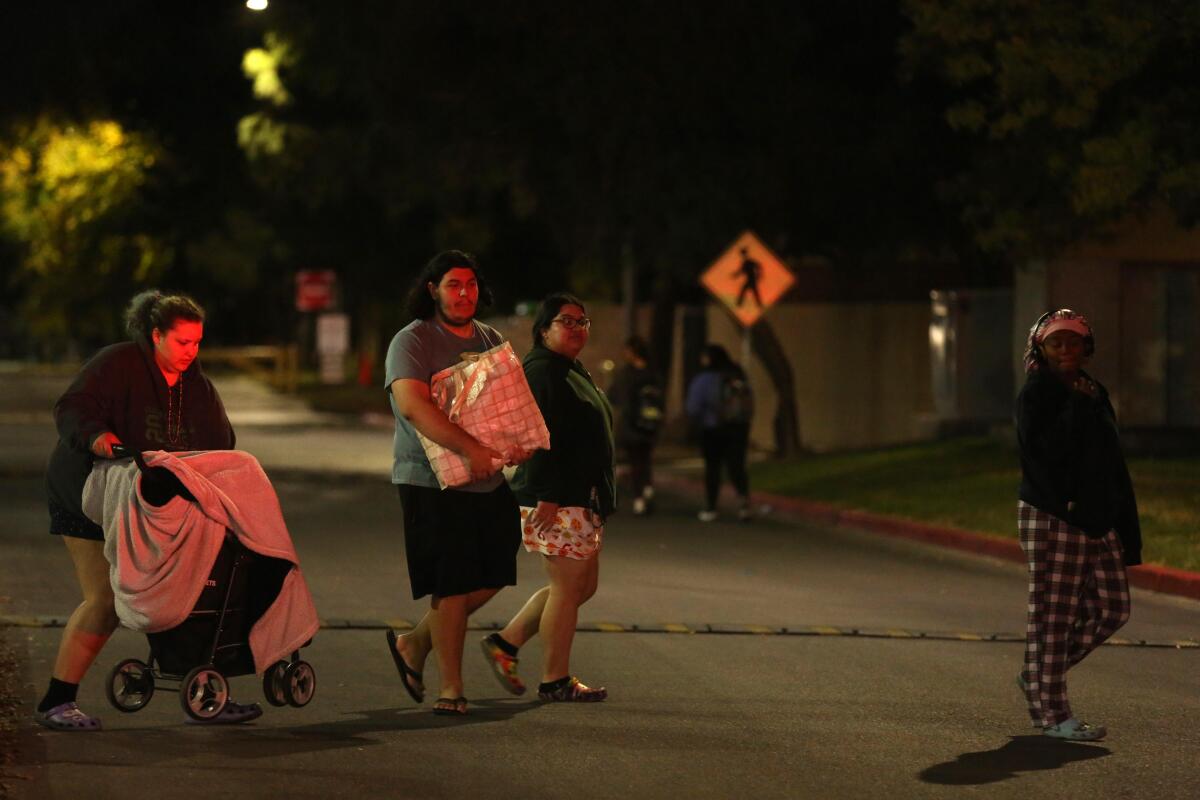
As another mass shooting traumatizes a college campus -- this time the University of Nevada, Las Vegas -- California universities point to tools developed to protect students, staff and faculty.
“How are people supposed to feel comfortable going back to school?” said 22-year-old student Olivia Stabile. It’s “supposed to be a place of safety, learning and making memories and building yourself as a human.
“Now we have to go to school,” she said, “with the fear in the back of our head that, oh, we could potentially die today.”
Carlos Eduardo Espina, a UNLV student with more than 7 million followers on TikTok, went live on the platform while still on lockdown.
He said he was in the middle of a test when the first alert came in. From a classroom, he tracked coverage and reacted on camera.
Espina, who studies law at UNLV, said students were confused by the messaging about the shooter’s location, leading them to believe there was a second gunman on campus.
“The messages that they sent us, it made it seem that way,” said Espina, 24. “Where they say, ‘First, he’s here,’ so we’re like ‘OK.’ Unless he somehow got from one place to the other without getting detected. It just didn’t make much sense.”
He said that aside from texts telling students to shelter in place, UNLV did not update students about the attack, including messaging that the shooter was dead.
Espina said that he, along with “a couple thousand” students, were evacuated to the Thomas & Mack Center.
“It’s one of those things that can always happen, but you want to think it’s not gonna happen,” Espina said of the shooting. “That’s what a lot of us were saying. It happened right here, really close to us. It’s scary.”
As a native Californian, I’m used to thinking earthquakes are just a fact of life. But we shouldn’t approach mass shootings that way.
Cesar Marquez, the chair of the Nevada Forward Party, an organization that aims to expand political options, was on campus during the shooting.
He wrote in a post on X that a “SWAT team came and evacuated us from the student union.”
In videos posted to the site, dozens of students wearing backpacks can be seen walking through a parking lot past police. Some have their hands raised. A helicopter circles overhead as the students are led beyond a police line.
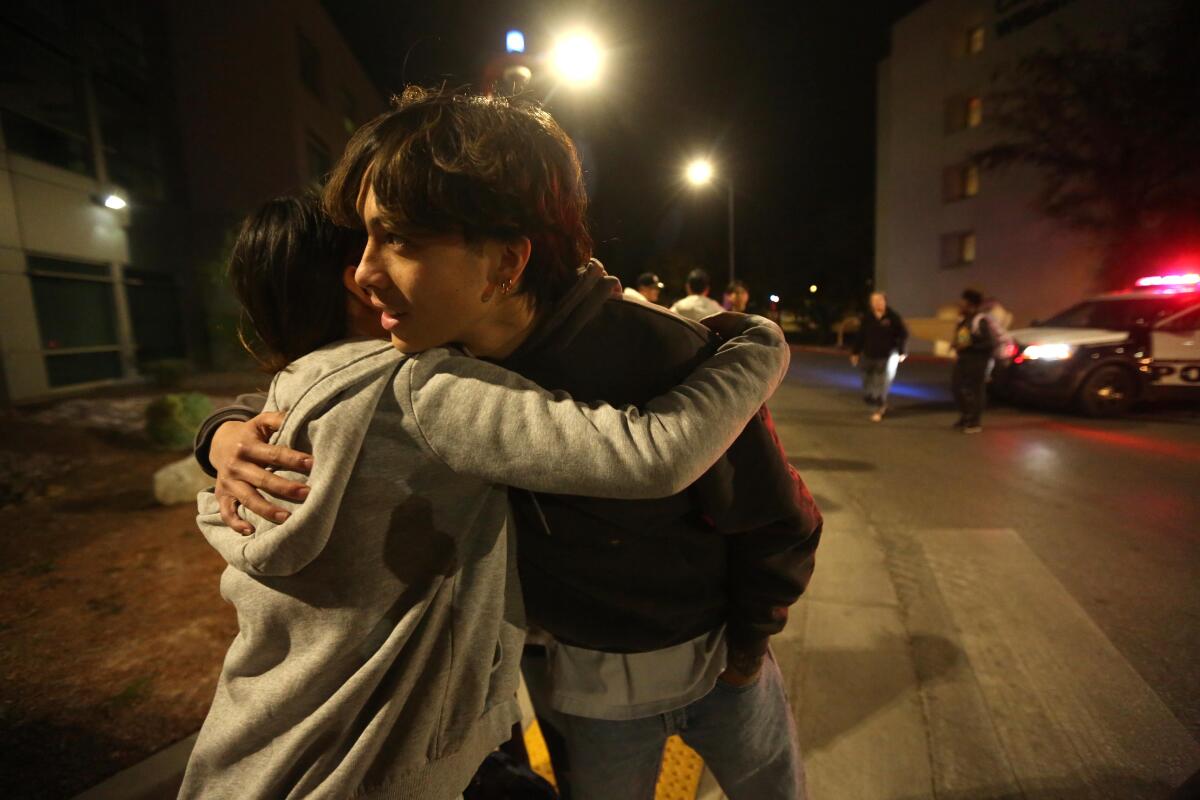
UNLV, less than two miles east of the Las Vegas Strip, has enrollment of about 25,000 undergraduates and 8,000 postgraduates and doctoral candidates. According to the university’s academic calendar, this is the last week of regular instruction, with final exams scheduled next week.
Coco Zhang, a volunteer with Students Demand Action in Las Vegas, an anti-gun-violence group, said in a statement that the UNLV community has been “wrecked by this tragedy.”
“It’s wild to even have to say this, but our schools shouldn’t be plagued by gun violence,” Zhang said. “We should feel safe going to class, not worrying about whether we might get shot. To our lawmakers, how many more of us have to die before we put an end to this crisis?”
Redondo Beach police have arrested two students with loaded firearms at Redondo Union High School over the last two days, prompting lockdowns and canceled classes.
The Lakers are scheduled to play in Las Vegas on Thursday night in the semifinals of the NBA’s first-ever In-Season Tournament. The venue for the game, T-Mobile Arena, is three miles from UNLV.
In a post on X, the NBA said Nelly and TLC were scheduled to perform outside the arena Thursday.
LeBron James, talking with reporters Wednesday, spoke out about gun violence. “We keep dealing with the same story, this same conversation every single time it happens, and it just continues to happen,” the Lakers star said. “The ability to get a gun, the ability to do these things over and over and over, and there’s been no change, is literally ridiculous. It makes no sense that we continue to lose innocent lives, on campuses, schools, at shopping markets and movie theaters. ... It’s ridiculous. The fact that we haven’t changed anything — it’s actually been easier to be able to own a firearm. It’s stupid.”
The shooting comes more than six years after a gunman opened fire on the Route 91 music festival from his hotel room at Mandalay Bay, killing 59 people and injuring more than 400 before turning the gun on himself.
There have been at least 630 mass shootings in the U.S. as of Wednesday, according to the Gun Violence Archive, which defines a mass shooting as an incident with four or more people shot, injured or killed — not including the shooter.
The Gun Violence Archive is an independent research group that collects data from law enforcement, media, government and commercial sources.
Times staff writers Christian Martinez, James Rainey, Joseph Serna and Richard Winton contributed to this report.
More to Read
Sign up for Essential California
The most important California stories and recommendations in your inbox every morning.
You may occasionally receive promotional content from the Los Angeles Times.

